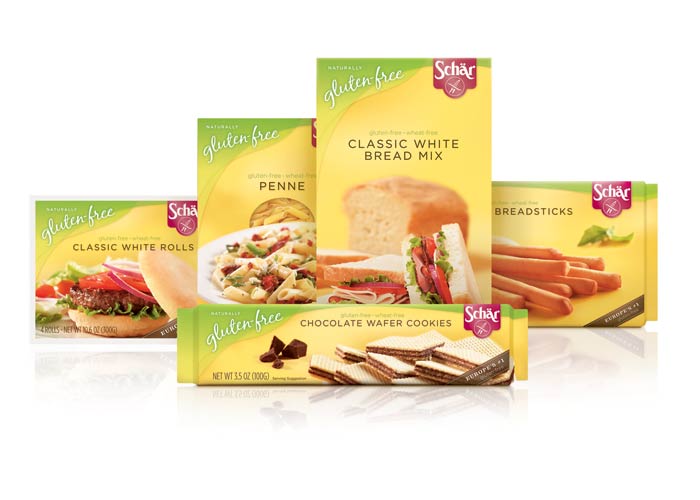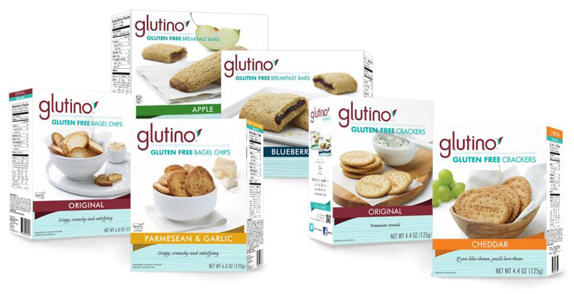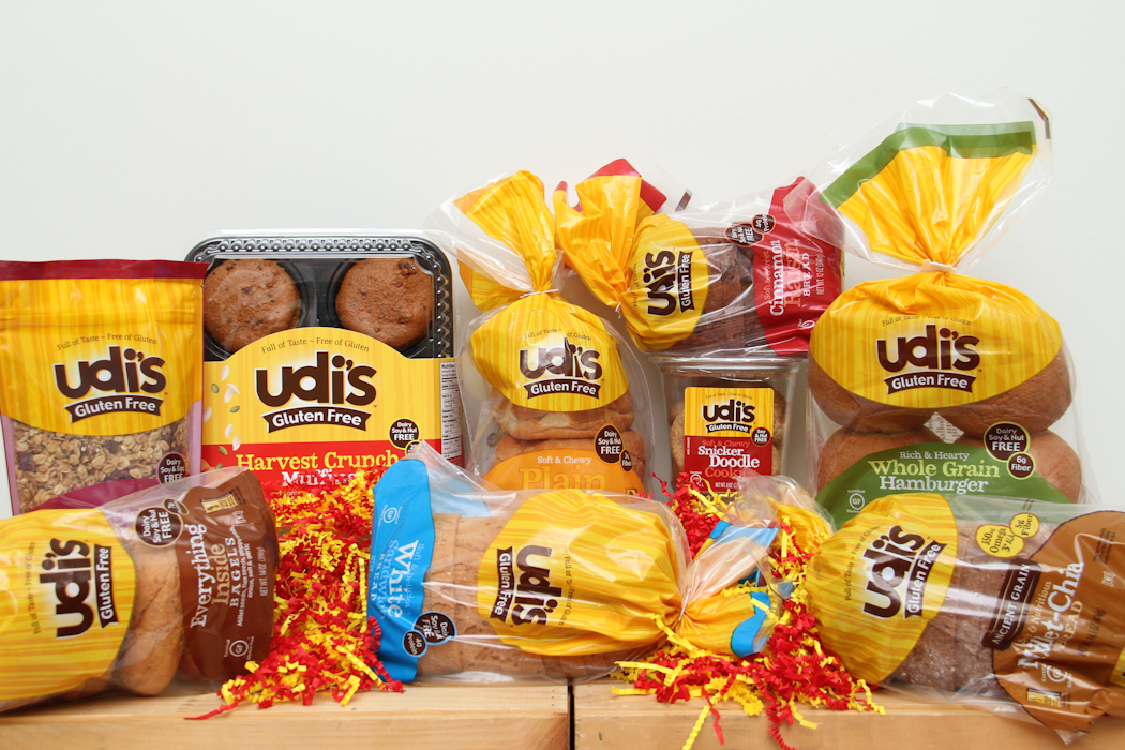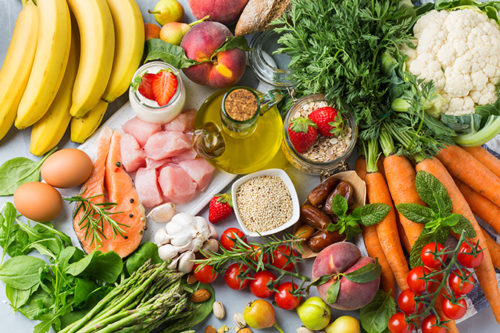What is a gluten anyway?
 In short, gluten is a substance found in wheat-based products such as cereal grains, bread, pasta, and it is responsible for the elastic texture of dough. It is actually a mixture of two proteins and causes illness in people with celiac disease. Some of the other names for the wheat based grains are durum, emmer, spelt, farina, farro, KAMUT® khorasan wheat and einkorn, rye, barley and triticale. It is also found in beer (wheat grains are used in the processing), soy sauce (again, processed with wheat grains). It is hidden as a filler or processing agent in so many foods – even those you would assume are naturally gluten-free.
In short, gluten is a substance found in wheat-based products such as cereal grains, bread, pasta, and it is responsible for the elastic texture of dough. It is actually a mixture of two proteins and causes illness in people with celiac disease. Some of the other names for the wheat based grains are durum, emmer, spelt, farina, farro, KAMUT® khorasan wheat and einkorn, rye, barley and triticale. It is also found in beer (wheat grains are used in the processing), soy sauce (again, processed with wheat grains). It is hidden as a filler or processing agent in so many foods – even those you would assume are naturally gluten-free. Having been diagnosed with celiac disease several years ago, and then my son being diagnosed three years ago, I have faced many of the challenges of having a gluten allergy such as the gluten-related illnesses, the mad search for gluten-free foods, doing without because it was hard to find and the great expense of buying gluten-free foods.
When I was first diagnosed, there just wasn’t a lot of gluten-free options out there. If I wanted bread, I had to order special expensive flours. Since gluten is responsible for the elasticity and sort of chewiness of bread and pasta, it is hard to duplicate and using just one type of flour never worked. To effectively make your own bread, you had to combine several flours (like almond, potato, rice) and add some of the sticky effect with guar gum or xantham gum. This, as you can imagine, was not only time consuming but extremely expensive and most of the ingredients needed to be special ordered. I was actually rather happy when celiac disease started to be more widely recognized and the need for companies to offer gluten-free products was demanded by the consumers.
Not all gluten-free products are created equally
Recently, there are so many more gluten-free options that are widely available but, how do you know which one to buy? Because the products can still be very costly, its frustrating to buy something only to discover it tastes like someone mashed up old socks and cardboard together in a loaf pan, sliced it and bagged it as bread. At $6 for a half loaf of bread – makes you think twice about eating it anyway instead of throwing it away! Luckily, I had the opportunity to serve on a panel for Schnucks supermarkets when they decided to offer gluten-free products and was able to taste test and provide feedback. In this fortunate event, I was able to sample many options for free and have learned that not all gluten-free products are created equally. Here are some of my favorites that meet the cost vs. quality standards:
 Schar – I can’t say enough about Schar products. They are relatively inexpensive (seriously – it amazes me at what we deem not expensive when desperate for some pasta or bready goodness), fairly easy to find at your local supermarket and are superior to many of the other brands. They offer several different pasta options, cookies and crackers.
Schar – I can’t say enough about Schar products. They are relatively inexpensive (seriously – it amazes me at what we deem not expensive when desperate for some pasta or bready goodness), fairly easy to find at your local supermarket and are superior to many of the other brands. They offer several different pasta options, cookies and crackers.
 Glutino – I don’t enjoy their off-the-shelf breads but, they make some wonderful crackers, cookies, and bagel chips. Basically, if it’s supposed to be somewhat dry and crunchy, it’s safe for Glutino.
Glutino – I don’t enjoy their off-the-shelf breads but, they make some wonderful crackers, cookies, and bagel chips. Basically, if it’s supposed to be somewhat dry and crunchy, it’s safe for Glutino.
- Udis – This is a lifesaver for those muffin, bread and bagel cravings as well as pre-packaged cookie dough
 and many other dough-type goodies and are usually found in the frozen section. The bread isn’t the best to eat unless it’s toasted but it’s one of the better tasting and textured breads available. Price wise – $5-$6 for four large muffins – (ouch) but well worth it if you need a muffin or bagel fix. Watch for these items to go on sale and be prepared to stock up! Because they are frozen, it’s easy to buy several when they go on sale and keep them fresh in your freezer.
and many other dough-type goodies and are usually found in the frozen section. The bread isn’t the best to eat unless it’s toasted but it’s one of the better tasting and textured breads available. Price wise – $5-$6 for four large muffins – (ouch) but well worth it if you need a muffin or bagel fix. Watch for these items to go on sale and be prepared to stock up! Because they are frozen, it’s easy to buy several when they go on sale and keep them fresh in your freezer.
- Canyon Bakehouse – One of the best off-the-shelf gluten-free breads I have found.This bread is soft, squishy, elastic and doesn’t need to be toasted in order to be edible. Cost is a little over $5 per small loaf.
- Finally, a larger number of what I think of as “normal” companies are providing gluten-free options such as General Mills. They have several Chex cereal options that are gluten-free and are priced the same as the rest of the Chex cereal. For my fellow pretzel lovers, Snyder’s of Hanover now make several types of gluten-free pretzels and they are the same price as normal pretzels and taste fantastic! (Seriously, I can barely tell the difference!)
How can I eat gluten-free without breaking the bank?
Some of the tricks I have learned over the years are:
- Keep an eye out for sales.
- Be ready to stock up.
- If a non-gluten free company is putting out a gluten-free product – it’s usually priced the same as their other products so for example, rather than buying Glutino rice square cereal, go for the Chex. It’s cheaper and in most cases – tastes superior!
- Follow gluten-free brands on social media and join their mailing lists – they often post coupons.
- Take advantage of the clearance aisles – you’d be surprised at how many gluten-free items are marked down – just be mindful that they may not have sold because they taste like dirt. Still – a cheaper way to try out a different product.
- Check out those grocery food stores that are normally known to be less expensive. You will be surprised at how many gluten-free items are stocked at Aldis, Walmart, Shop-N-Save, etc.
For more information on Celiac disease and gluten-free living, check out the Celiac Disease Foundation or Celiac.com.






Leave A Comment
You must be logged in to post a comment.